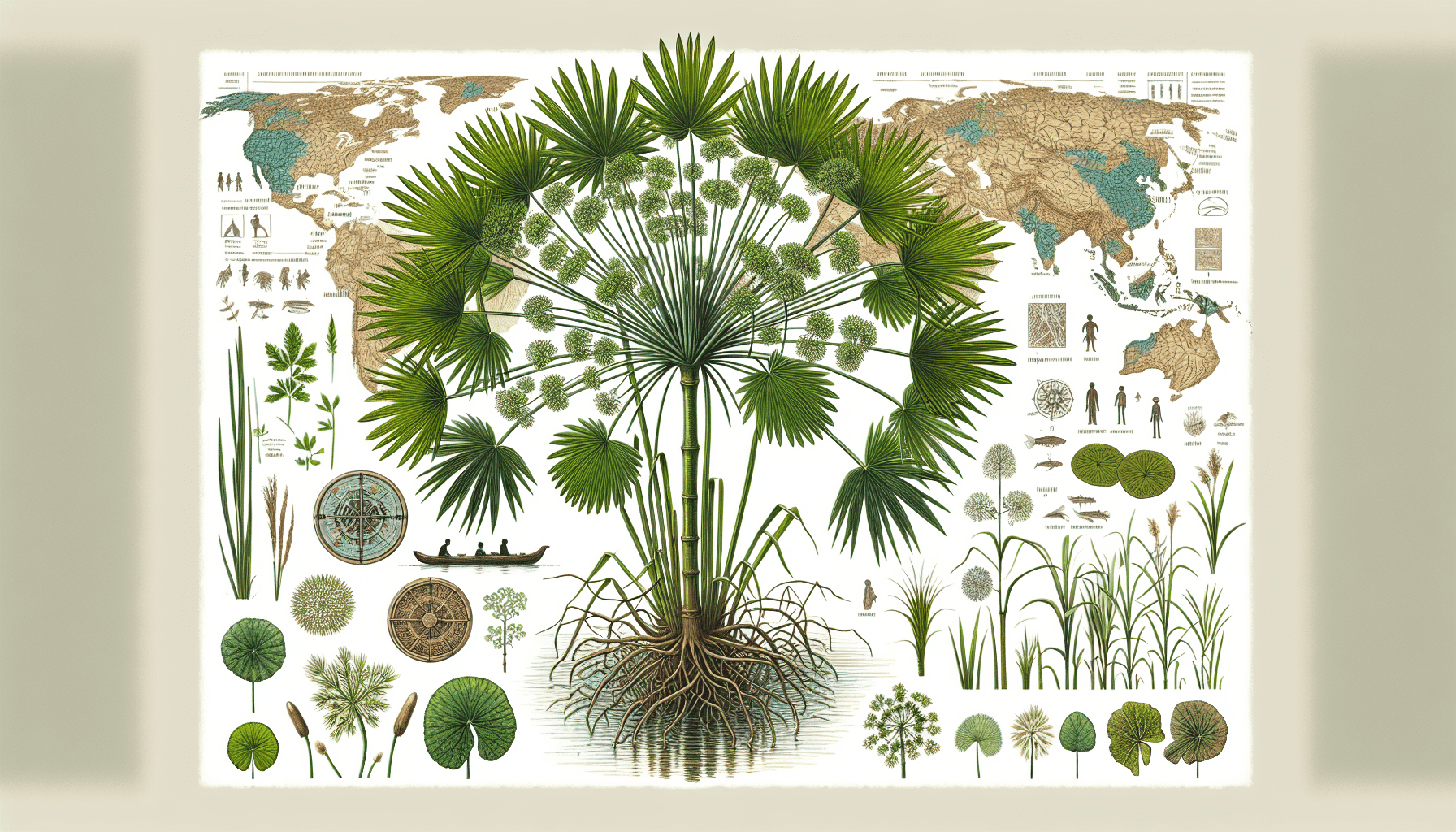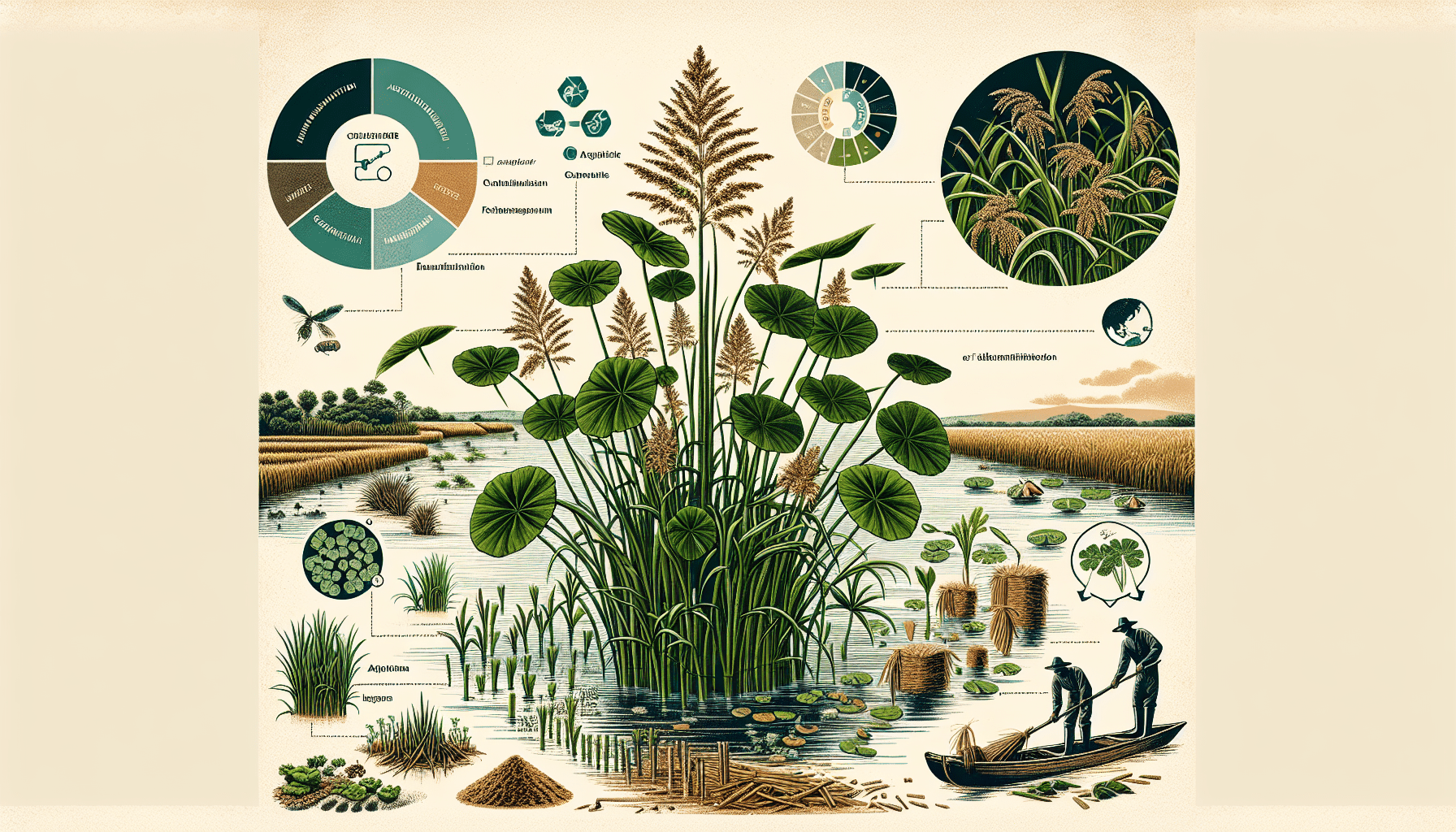In this scholarly exploration, you will gain a comprehensive understanding of the aquatic weed known as Cyperus difformis. Your acquired knowledge will stretch from its biology to the ecological role it plays in water systems, along with its potential impacts and management. Often overlooked, this prevalent water weed has significant implications for aquatic environments worldwide, hence illuminating its nature and traits is vital for any environmental or biological sciences student.
Overview of Cyperus Difformis
Definition and basic features of Cyperus Difformis
Cyperus Difformis, sometimes referred to as the ‘small flower umbrella sedge’, is a species of plant belonging to the Cyperaceae, or sedge family. Cyperus Difformis is a tufted annual plant that typically reaches between 20 to 70 cm in height, dependent on the conditions of its environment. The name “difformis” originates from Latin, signifying a “different form”, reflecting its morphological variation.
Origins and distribution of Cyperus Difformis
Cyperus Difformis is believed to have originated from tropical Asia, though it has since spread to become a cosmopolitan weed, found abundantly across various regions and countries. Its distribution is far-reaching, with it recorded in Asia, Africa, Australia, Europe, and North and South America. Its elevated adaptability enables it to thrive within a wide range of habitats with a preference for agricultural fields, especially irrigated rice.
Physical Description of Cyperus Difformis
The stems and leaves
Cyperus Difformis has triangular, leafy, and smooth stems that are typically pale greenish to yellowish in color. These stems feature reddish-brown sheaths at their base. Leaves are usually straight and flat, having a deep green color, and they alternate along the stems. The leaf blades are narrow and taper to a point, with a prominent mid-vein.
Root system and rhizomes
The root system of Cyperus Difformis is fibrous and does not typically form rhizomes. Instead, the plant propagates primarily through seeds. The lack of rhizomes, however, does not limit the robustness of the plant or its ability to populate various environments quickly.
Inflorescence and seeds
The inflorescence of Cyperus Difformis, or the arrangement of its flowers on the stem, comprises multiple clusters of small, pale green flowers. Seeds are extremely small, light, and have the ability to remain dormant in soil for years.

Life Cycle and Reproduction of Cyperus Difformis
The stages of the Cyperus Difformis life cycle
Cyperus Difformis is an annual plant, which means its entire life cycle is completed within one growing season. It initiates with seed germination, triggered by optimal environmental conditions such as ample moisture and light. The plant grows, flowers, and eventually generates new seeds, which fall to the ground and remain dormant until conditions permit germination in a future growing season.
Reproductive and dispersal strategies
Reproduction primarily occurs through an abundant production of seeds. Water, wind, animals, and human activities can aid in their dispersal. Due to the tiny nature and light weight of the seeds, they can easily be transported over long distances, contributing to the widespread distribution of this species.
Ecological Role of Cyperus Difformis
Cyperus Difformis in freshwater aquatic systems
Cyperus Difformis is a pioneering species in disturbed, wet environments like rice fields and irrigation canals. It plays a role in water purification by reducing nitrate levels, and contributes to biodiversity as it provides a source of food, as well as a habitat for numerous small insects and other aquatic animals.
Interactions with flora and fauna
This species may compete with other plants for resources such as light, water, and nutrients, adversely affecting their growth. Herbivorous insects and some bird species are known to feed on the seeds and foliage of Cyperus Difformis, indicating it has a role within food chains in its ecological niche.

Impact on Human Activities
Impact on agricultural systems and yields
Cyperus Difformis has been widely recognized as a serious weed in several cropping systems, particularly rice cultivation. It competes with such crops for resources and space, reducing their yield and quality. Additionally, it can complicate field operations and increase the costs of weed management.
Effect on water bodies and water management systems
In water bodies and irrigation systems, an extensive proliferation of Cyperus Difformis can obstruct water flow, increase water loss through evapotranspiration, and exacerbate siltation issues. It may also degrade aquatic habitats, negatively impacting the species relying on these systems.
Methods to Control Cyperus Difformis
Chemical control methods
Various herbicides are available for controlling Cyperus Difformis. These include pre-emergence herbicides, which inhibit seed germination, and post-emergence herbicides, which are applied once the plant has emerged.
Physical control methods
Manual weeding could be effective if done punctually, preferably before seed set. However, it is labor-intensive and may not be feasible for large infestations.
Biological control methods
Biological control is under research, using fungi and insects to control the plant’s population. However, the effectiveness and risk to non-target species still require extensive studies.
Limitations and Challenges in Controlling Cyperus Difformis
Resistance to certain herbicides
The increasing issue of herbicide resistance in Cyperus Difformis complicates control efforts. Over-reliance on herbicides may also contribute to other environmental issues, such as water contamination.
Difficulty in physical removal
Given the vast number of seeds that Cyperus Difformis can produce, along with their ability to lay dormant for years, it makes complete physical removal extremely difficult.
Negative impacts on non-target species through biological control
Biological control methods potentially risk harming non-target species, which can disrupt ecosystems. Consequently, these approaches require rigorous testing and control.
Research and Developments on Cyperus Difformis
Latest research findings on Cyperus Difformis
Recent research has primarily focused on aspects like herbicide resistance, genetic diversity, and potential biological control methods. Results underline the necessity for a diversified and integrated approach in managing Cyperus Difformis.
Potential future research
Future research could focus on understanding the biology and ecology of Cyperus Difformis, developing alternative control strategies, as well as producing more resistant crop varieties.
Development in control methods
Developments are necessary in both chemical and non-chemical control methods, including herbicides with different modes of action, as well as biotechnological and genetic approaches to weed management.
Regulations and Policies on Cyperus Difformis
International regulations and policies
On the international scale, Cyperus Difformis is regulated across several countries, where its introduction and spread is considered illegal.
National regulations and policies
At a national level, policies vary, but generally reflect a commitment to identifying and responsibly managing infestations of Cyperus Difformis as part of broader weed control efforts.
Impact of legislation on control and management
Strict regulations have resulted in more extensive control efforts, but also pose challenges due to the necessity for continuous surveillance, enforcement, and public education.
Educational and Outreach Efforts
Prevention and management training
Several organizations offer training and resources on the prevention and management of Cyperus Difformis. These are typically aimed at farmers, agricultural workers, and conservationists.
Role of local communities and farmers
Local communities, especially farmers, play a vital role in recognizing and controlling infestations early on, hence reducing its establishment and spread.
Public awareness campaigns and initiatives
Public awareness efforts focus on educating people about the damaging impacts of Cyperus Difformis, the importance of responsible management, as well as encouraging reporting sightings of the weed.